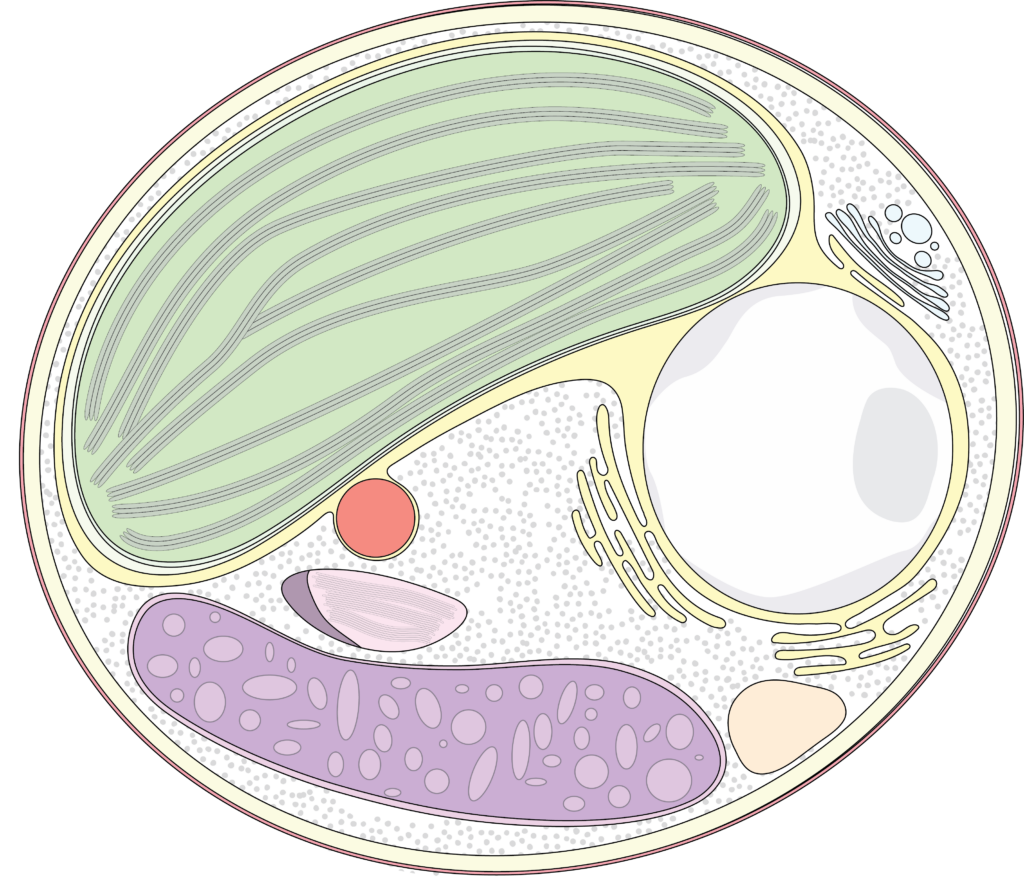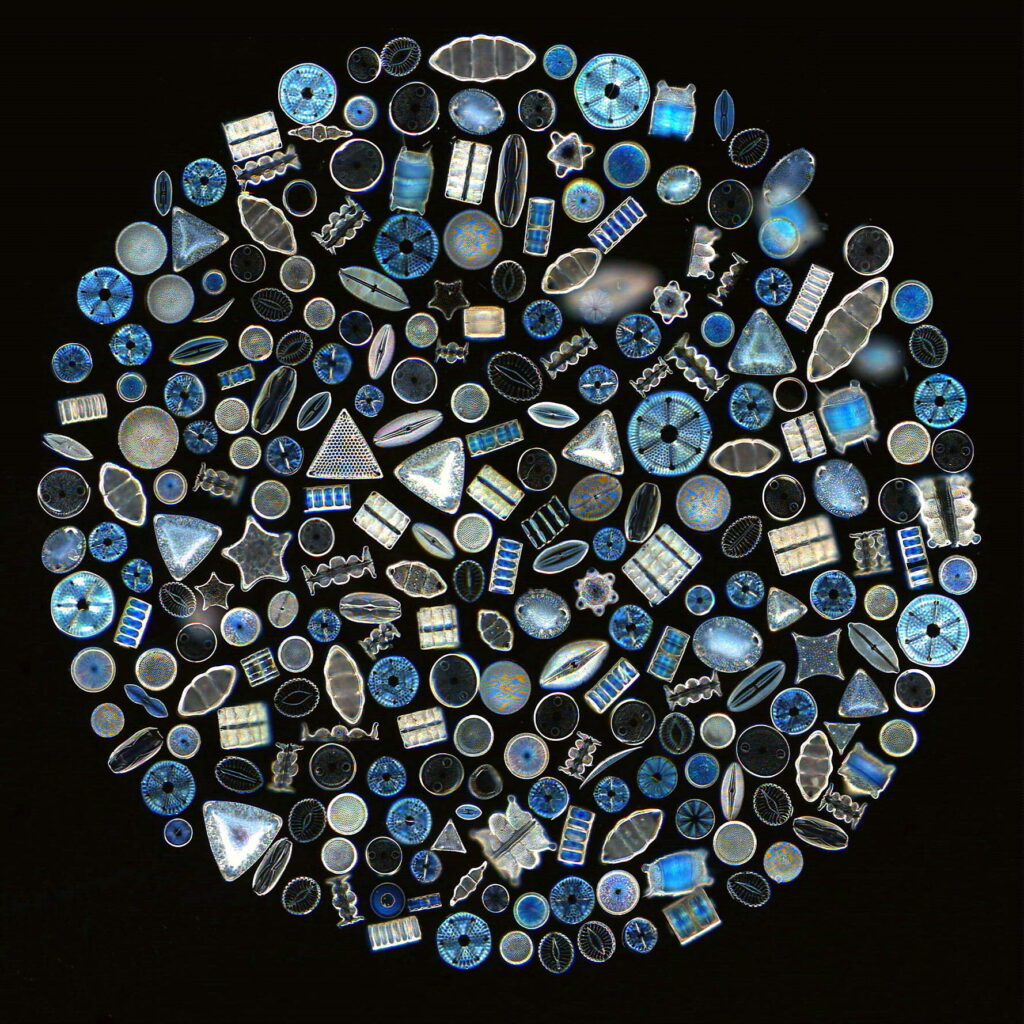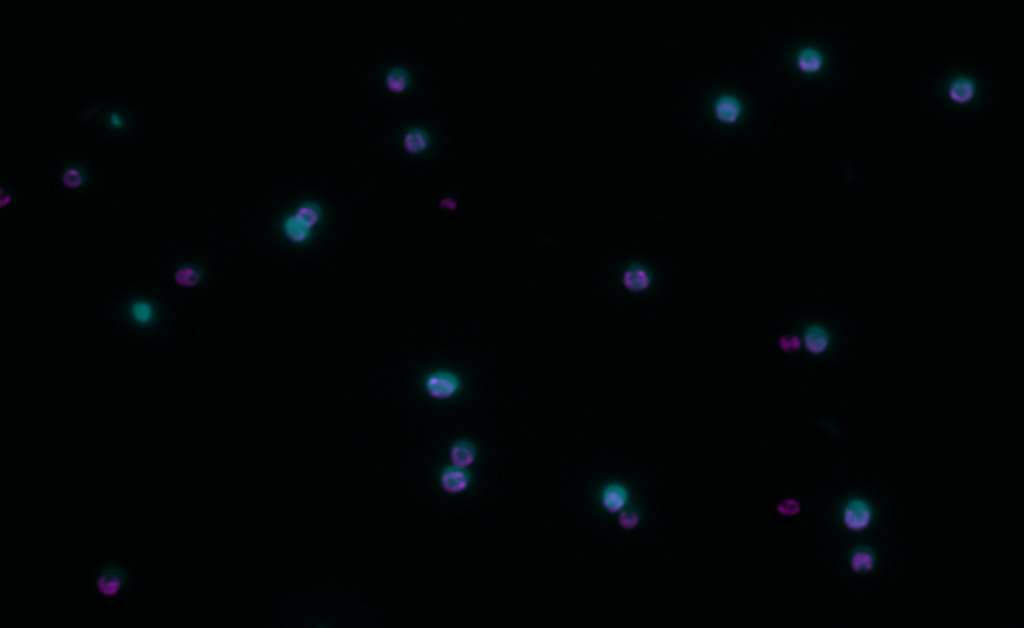Nearly half of global photosynthesis occurs in the ocean, and some of the phytoplankton biomass made from atmospheric carbon dioxide sinks out of the upper, sunlit ocean into the deep ocean, where it is sequestered for thousands of years. This fundamental biogeochemical process is called the biological carbon pump, and we aim to elucidate some of the molecular mechanisms that underlie its operation.
Phytoplankton photosynthesis
The first step in the biological carbon pump is photosynthesis. Phytoplankton in the upper, sunlit ocean do photosynthesis, taking up carbon dioxide from the atmosphere and converting it into biomass. Thus, these mostly microscopic algae and cyanobacteria are the ocean’s primary producers, and they form the base of the marine food web. Photosynthesizing in this environment is very challenging, and phytoplankton must cope with fluctuations in light, CO2, and nutrient availability. We are interested in understanding how phytoplankton photosynthesis is regulated.

Silica biomineralization

Many types of phytoplankton, including diatoms, have a nanostructured cell wall that is made of glass. This cell wall, constructed through a process called silica biomineralization, causes cells to sink faster and thus contribute more to oceanic carbon dioxide sequestration via the biological carbon pump. We are using comparative genomics, systems biology, genetics, and gene editing to understand how these important organisms biomineralize silica and make their outsized contribution to the biological carbon pump. Gaining understanding of molecular mechanisms of biomineralization is not only fundamentally important for carbon sequestration but also for translational biology and material science. Diatoms have been considered as prime target organisms for the development of bionanomaterials using their cell walls.
Algaenan biosynthesis
Another way in which phytoplankton contribute to carbon sequestration is through the synthesis of recalcitrant carbon biopolymers, such as algaenan, that are components of their cell walls. Algaenan is synthesized by phytoplankton from atmospheric carbon dioxide, and due to its inert nature, it is hypothesized to have a role in the biological carbon pump when it is shed from phytoplankton and sinks into the deep ocean. Some of this material ends up being deposited in sediments as kerogen, which is converted to petroleum and natural gas on a geological time scale. Thus, the biological carbon pump is the basis of contemporary fossil fuel reserves, which humans are burning as sources of energy, resulting in the release of carbon dioxide that was removed from the atmosphere by photosynthesis over many millions of years. We are investigating the biosynthesis of algaenan by phytoplankton with the long-term goal of understanding its role in sequestering atmospheric carbon dioxide.
This research is supported by DOE-BES, HHMI, and the Community Science Program of the DOE Joint Genome Institute.

